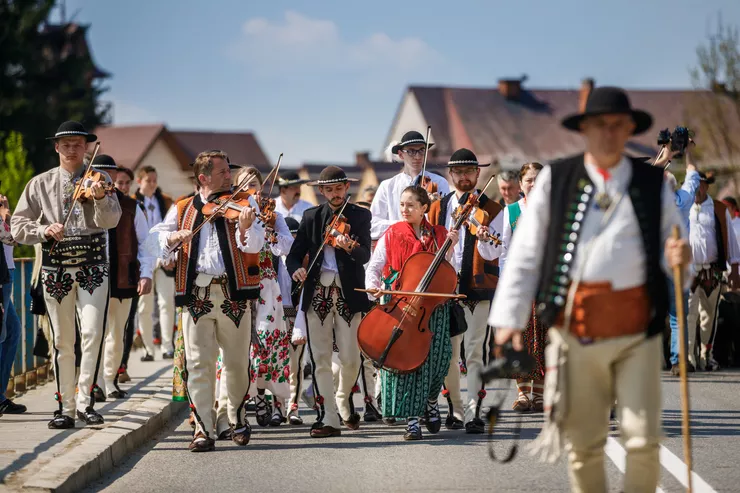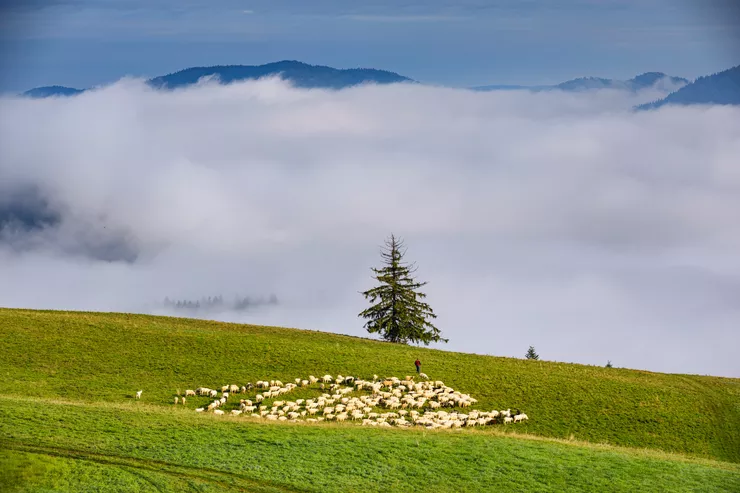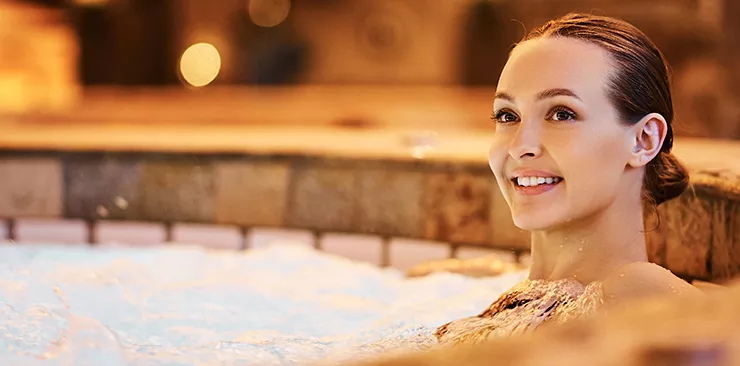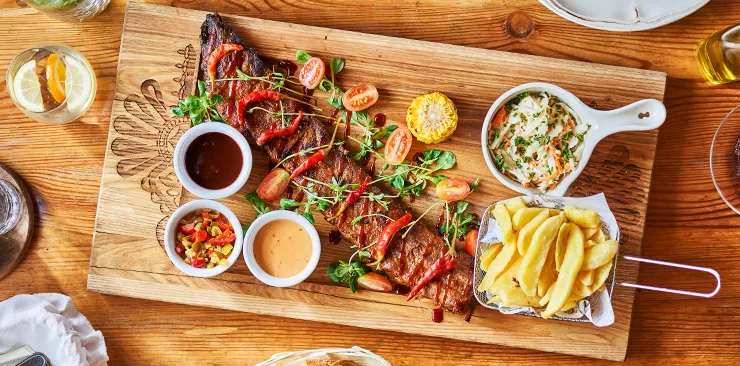





Polish Highlanders: a fine and genuine culture to admire.
Some say the key difference between Górale – the Polish Highlanders – and those living in Scotland is that Górale live in the south, and the Scottish Highlanders live in the north. This may be an exaggeration, yet similarities are plenty, with costume, playing the bagpipe, vernacular language, and a particular sense of humour certainly being among them. And the culture they developed over the centuries is certainly worth interest.

Living in harsher natural conditions and farming less fertile soils, highlander communities around the world have evolved a particular attitude to life that melds hard work with independence, a particular ironic attitude, and a strong sense of pride. The cheerful and self-assured Górale, the Polish Highlanders, are no exception.
The uniqueness of their culture was perhaps first appreciated in Poland late in the 18th century when (a half of) the first Polish opera was devoted to them. A century later, when discovering exotic cultures was very much en vogue throughout Europe, Poles realised they had an unspoilt community at their doorstep. Attracted by it, they began thronging to Zakopane. Soon Górale not only began to sell them their food (You can learn more about their famous cheeses, notably the Oscypek.) and rent their cottages but also shared the knowledge of the secret mountain passes and their intangible culture so greatly coveted by the arriving artists and intellectuals. In return, the architects built and decorated their homes, and painters, composers, and poets praised their culture with its unique costume, songs, and customs.
The fascination continues, and there are plentiful festivals and events that celebrate the highlander arts in Małopolska and elsewhere in Poland. One certainly not to be missed is the 54th International Festival of Highlander Folklore held in Zakopane’s Równia Krupowa on 18–24 August 2023. The idea behind it is to promote the genuine customs and rites rather than to compile sophisticated but artificial song and dance medleys. A great tool to achieve that is the Władysław Trebunia-Tutka International Competition for Folk Bands, Instrumentalists, and Singers, being part of the festival. The festival is very important for the Highlanders as it brings out the most valuable elements of their culture, and an opportunity for the visitors to take a sneak peek into it while contestants vie for prizes for presenting authentic, artistically arranged, and reconstructed folk customs. It is also an opportunity to meet in the special atmosphere of the festival village, over a bonfire cracking to the sound of Górale music. The accompanying events are plenty and include a folk art fair for the enthusiasts of handicrafts.
Speaking of folk art and Zakopane style, the Tatra Museum in Zakopane invites you to marvel at them in all their splendour in its seven branches in Zakopane and four in nearby villages. Many of them are situated in historical wooden villas – the Oksza (Gallery of 20th-Century Art), the Koliba, and the villa standing at Droga do Rojów 6 – and they all concentrate on the unique Highlander culture and how it inspired the great Polish artists of the 19th and 20th centuries.
The Highlander Festival in Zakopane and the Tatra Museum are just two great options; to see some of the others, just click here.
Górale still heed the clan structures, and you will find many family names and monikers recurring among the Polish Highland folk.
Following their musical tradition, one of eminent Górale families go on performing the songs their fathers and grandfathers played as Trebunie Tutki family band. A star of first order among Highlander bands, they have also run a reggae project with The Twinkle Brothers and another one with Urmuli, a traditional Georgian male choir.
Quite understandably, the Górale regional cuisine is based on the produce of the hardly fertile mountain fields, and include moskole boiled potato pancakes, assorted sheep cheeses, stews, and trout from the local rivers.
Sheep are an important part of the Highlander culture. On 23 April (the feast of St Adalbert, patron saint of shepherds) they go out to the mountain pastures, where they graze until Michaelmas (29 September), with the attending shepherds regularly coming down to sell the milk and fresh cheeses and buy some provender.
The branches of the Tatra Museum situated outside Zakopane include The Museum of the 1846 Chochołów Uprising commemorating the Kraków Revolution that predated the famous Spring of Nations by two years, two cottages with their crofts in Czarna Góra and Jurgów (in Spisz Region), and a noblemen’s manor in Łopuszna.








